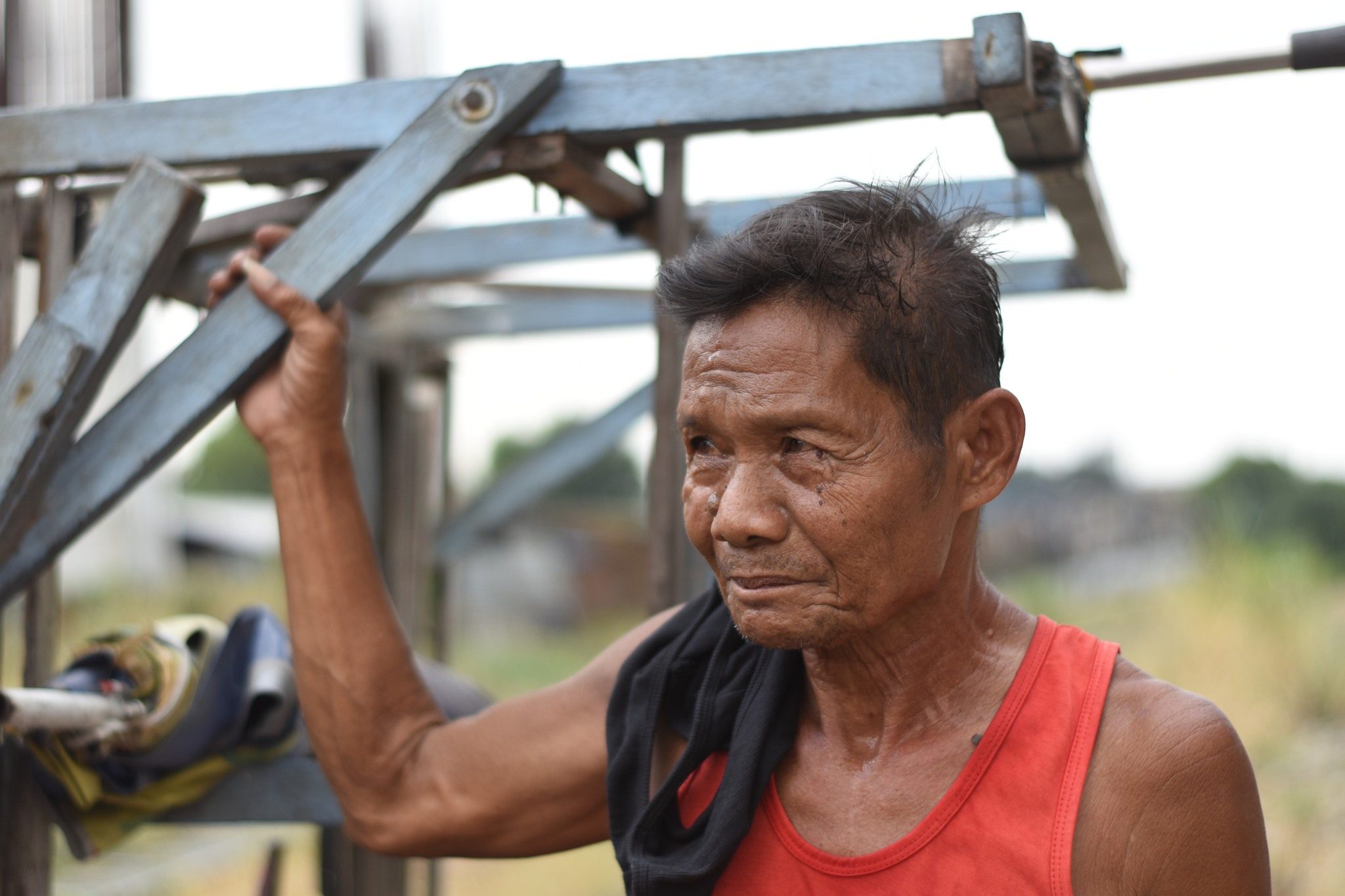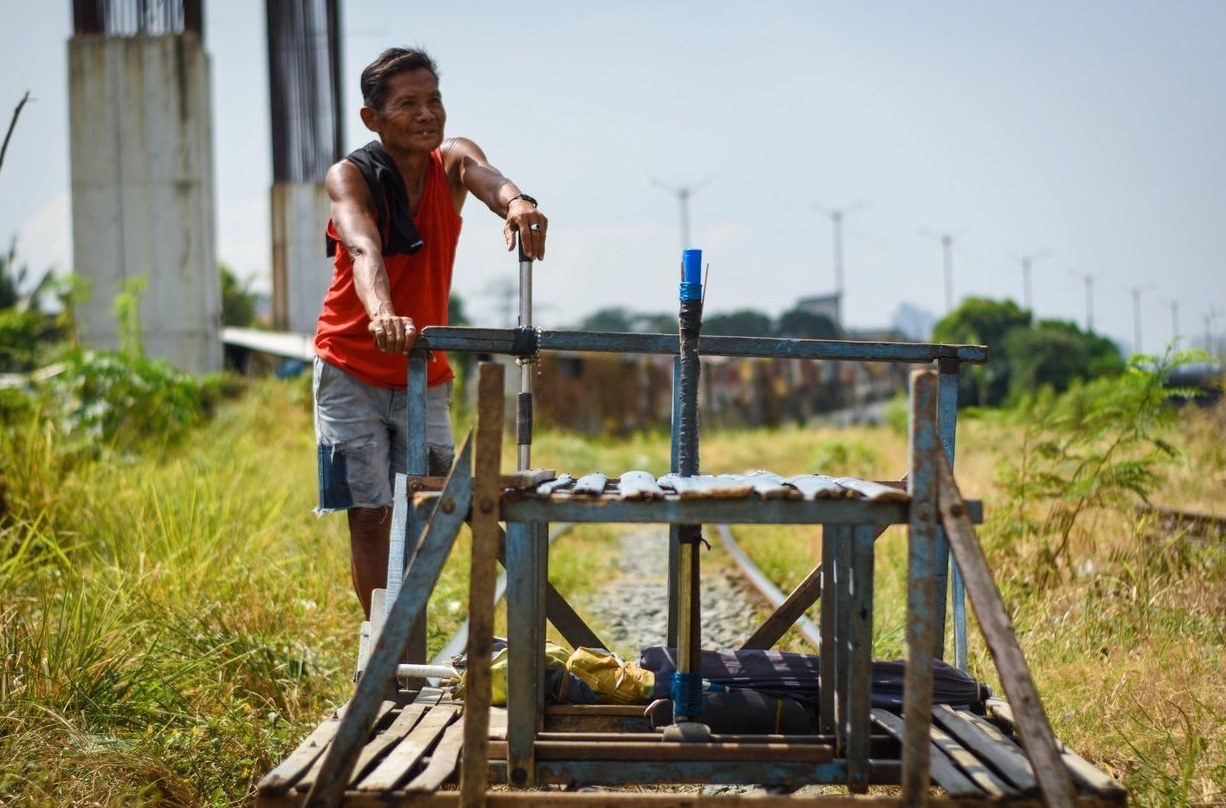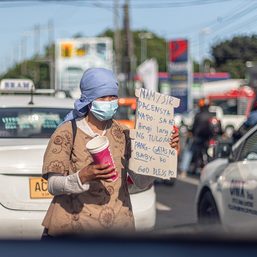SUMMARY
This is AI generated summarization, which may have errors. For context, always refer to the full article.

MANILA, Philippines – Besides the looming wipeout of traditional jeepneys through the public utility vehicle modernization program, another form of transportation is wary of being stamped out through modernization.
This time, it’s Manila’s illegal transport service, considered as among the world’s most dangerous commutes – the trolleys on Philippine National Railways (PNR).
“Patay! Hindi ‘ata makakatapos ang anak ko (It’s doomed! My son won’t graduate now),” said Rodolfo “Sangkay” Maurillo, reacting when he heard about the PNR’s railroad improvement project through the construction of North-South Commuter Railways (NCSR).
Tatay Sangkay, as his student passengers call him, is a 64-year-old trolley pusher who was among the pioneers of the bizarre transport method in their community in 1979.
His vehicle is a manually pushed handmade wooden cart that plies along the PNR tracks from Santa Mesa to Pandacan station, sending passengers for five to seven minutes from point to point.
In a 2018 article on Yahoo! Finance, the illegal service was dubbed “the world’s most dangerous commute.”

Walking on a tightrope
There’s no holding back for Tatay Sangkay to walk on a tightrope every day, pushing his two-decade-old trolley, because it means food on the table. In his case, however, there’s no table to be served food as he lives in a very small shanty alone that he built beside the pile of lumber to be used for the new rails’ construction.
Since he moved to Manila from Leyte around 1979, his family has lived in an informal settlement site in Santa Mesa. In 2007, however, a design company for condominiums demolished their houses and force-relocated their community to Bocaue, Bulacan. This is also the year when his wife gave birth to their only child.
Tatay Sangkay found no opportunities for job openings or any livelihood in the relocation site, so he traveled back to Manila that same year to find a job. Having nowhere to live, the wooden trolley is what he considered his home. The cart has become both his bed and house for 16 years until building his small shelter last year.
Passengers in those times, he said, were still looking for trolleys to ride, so he continued the illegal service even if his wife and infant were left in Bulacan.
Being the oldest trolley pusher in the area, the loud horns of an approaching PNR train do not disconcert him anymore. By pushing the cart carrying, at most, eight people for a single trip, his perseverance to generate income and send money to his family every weekend is what keeps him strong in making ends meet.
Passengers, he said, prefer a trolley ride to other transports to escape the traffic jams of Manila with less smoke and pollution while traveling.
“Ako, masigasig ako kahit matanda na ako (I am still enthusiastic despite my age),” he said.
Simply dangerous
Before the COVID-19 pandemic, Tatay Sangkay was earning around P500 daily. For around P7 to P10 per head, he gave a ride to passengers for a whole day. But before he could earn this much, he had to risk his and his passengers’ lives by dangerously traversing the track where a PNR train shuttles.
In times of pitfall when a train is heading in their direction, he swiftly lifts and carries the trolley to the other side of the track. But once, he and his passengers faced a terrifying moment when two trains approached them from both directions. In a split-second decision, they positioned themselves in the middle of the tracks, along with the trolley, as the trains, each traveling at around 40 kilometers per hour, passed by.
Such precarious situations led the PNR management to ban their operations on the railways in 2019, said Tatay Sangkay. Trolley pushers then negotiated for the continuation of their presence on the tracks, for it being their lone means of living. He claimed they were allowed to return to the dangerous service but limited their operations to certain hours.
For family’s sake
Now, Tatay Sangkay and other trolley owners can only operate from 7 am to 8 am, and 4 pm onwards. The limited hours left a huge impact on their incomes because even if the fare has increased to P20 per passenger, he now earns only a maximum of P200 for a day or two.
Seeing his son’s commitment to finish his studies keeps Tatay Sangkay moving forward. The 17-year-old, who is now in senior high school, is bent on pursuing a degree in information technology (IT).
He said thinking about his child’s dedication motivates him on every trip, making him somewhat immune to challenges like heat, danger, and physical constraints while doing push-and-runs on the rail tracks.
“Iniisip ko kasi ‘yung anak ko. ‘Yung anak ko kasi nangako siya sakin: ‘Pa, mag-aaral ako nang mabuti.’ […] Kailangan malakas pakiramdam mo dito. E ako, ingat na ingat din ako kasi sabi ng anak ko, ‘‘Pa, mag-ingat ka, ‘tutuloy ko pagaaral ‘ko.’ Sabi ko, ‘Sige kung ‘yan ang gusto mo.’ Kaya di ako sumusuko dito,” he said.
(I think about my son because he promised me: ‘Pa, I’ll be good in my studies.’ You need to have a strong feeling here. I, myself, I’m always being careful here because my son said, ‘Pa, always watch yourself out, I will continue to study.’ I then replied, ‘I’m okay with that if that’s what you want.’ That’s why I never give up.)
Worried for Tatay Sangkay
Ellen Ayubit, 67, who was among the relocated families in 2007 with Tatay Sangkay, has been admiring his perseverance for years of pushing trolleys despite its dangers. Working hard to provide education to his son every day, she praised the trolley pusher for working despite his age instead of being a bystander.
But Ayubit, who sees Tatay Sangkay as family, said she always worries when he comes back late from Pandacan to Santa Mesa, fearing that he might have an accident, especially when crossing the bridge over the Pasig River in Paco.
For the construction of NSCR, an elevated, double-track, and electrified train system will be built directly on top of the existing tracks of PNR. The modernization means a total wipeout of the unofficial transport culture in the area, a livelihood that became the bread and butter of a community for almost half a century.
Tatay Sangkay said he hopes that despite the ongoing construction at Alabang Station, his income from pushing trolleys will be enough to support his son’s college expenses and graduation. If trolley-pushing is banned, he said he would switch to pedicab driving, borrowing a sidecar to continue providing for his family.
Rosary and faith
“Nangangamba rin ako syempre kasi kahit papaano, ‘yung kita ko dito sa riles, sarili kasi eh. Wala akong bina-boundary-han. E nanghihinayang din ako. Ngayon, kung talagang gusto nila [gawin] ‘yung riles, patigilan na kami, wala kaming magagawa. Syempre gobyerno na ‘yun,” he said.
“Kung talagang gusto nila [kami] mapaalis, tumulong sa isang taong kagaya ko, senior [citizen], mabigyan man lang ho ng kahit kaunting kabuhayan, okay na ako. Wala na akong kahilingan,” he added.
(I still fear because at least, what I earn here on the rails is mine. I’m not paying through a boundary system. I feel sorry for its loss. Now, if the government persists in working the rails and banning us, we cannot do anything. They’re the government. If they really want to ban us and help senior citizens like me, a small livelihood will do. I’m okay with that. I have no other wishes.)
When asked how he stays strong, he said praying before each trip gives him the strength to carry on. He also said he believes the rosary hanging on his trolley keeps him safe, along with his family’s trust in him and their faith in God. –with reports from Precious Altura/Rappler.com
Chris Burnet Ramos is a campus journalist from the Polytechnic University of the Philippines (PUP). A senior news writer for The Communicator, he is also an Aries Rufo Journalism fellow of Rappler for 2023-2024.
Add a comment
How does this make you feel?









There are no comments yet. Add your comment to start the conversation.